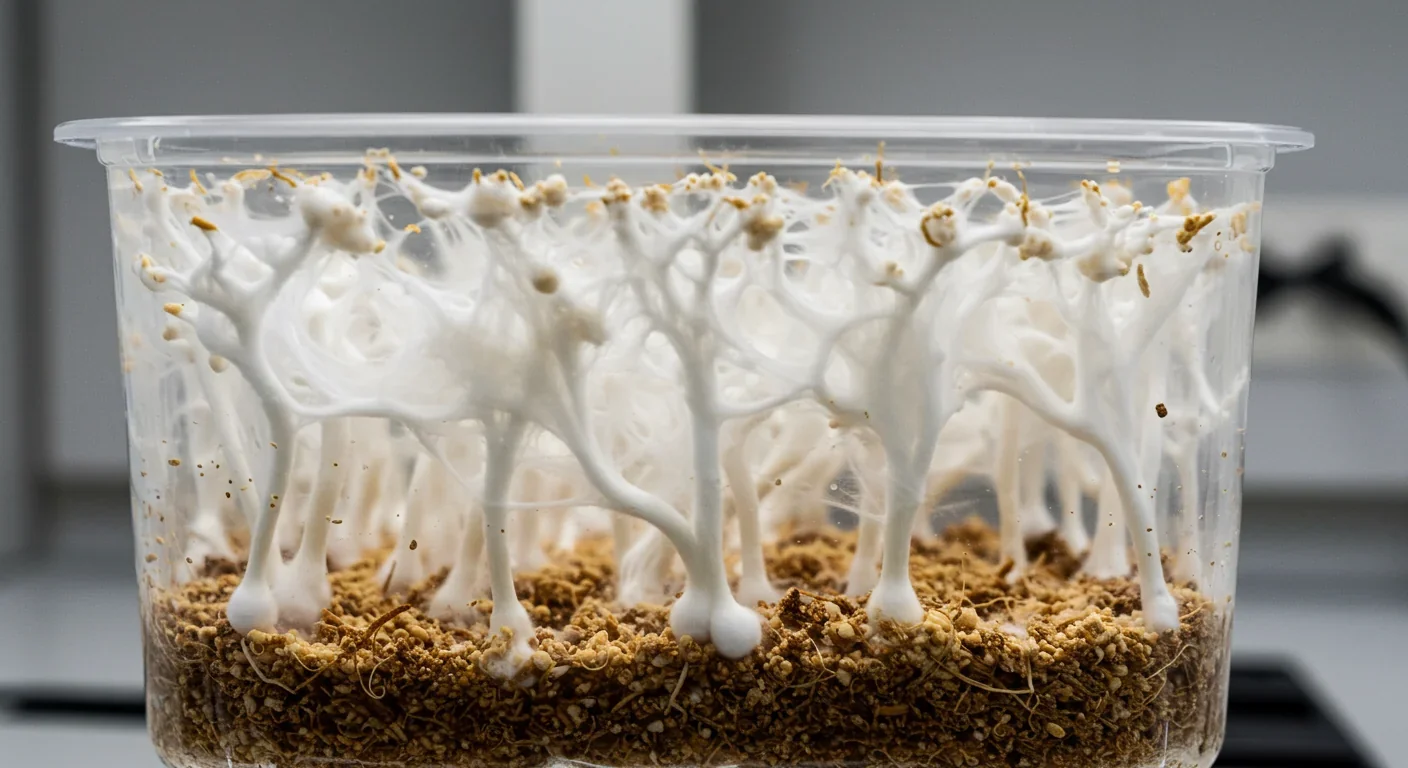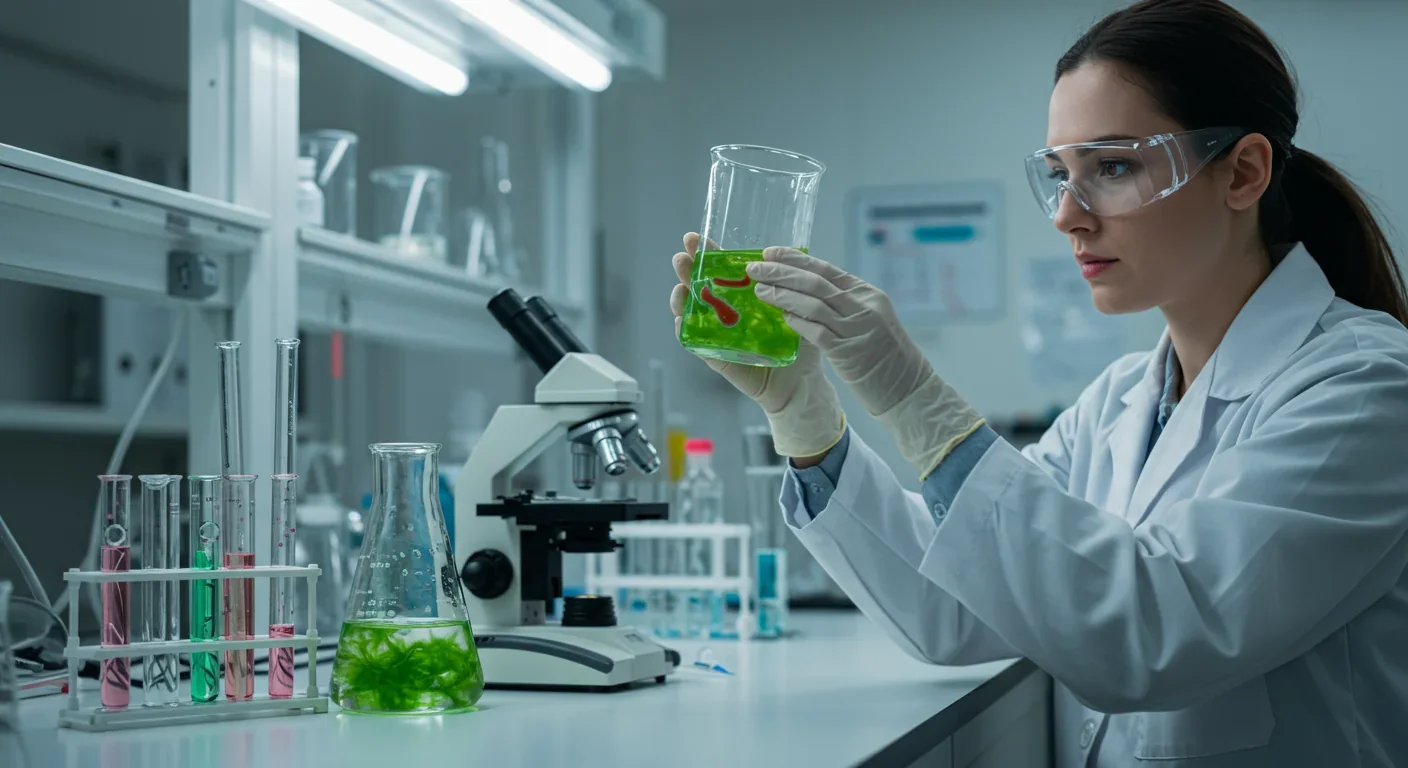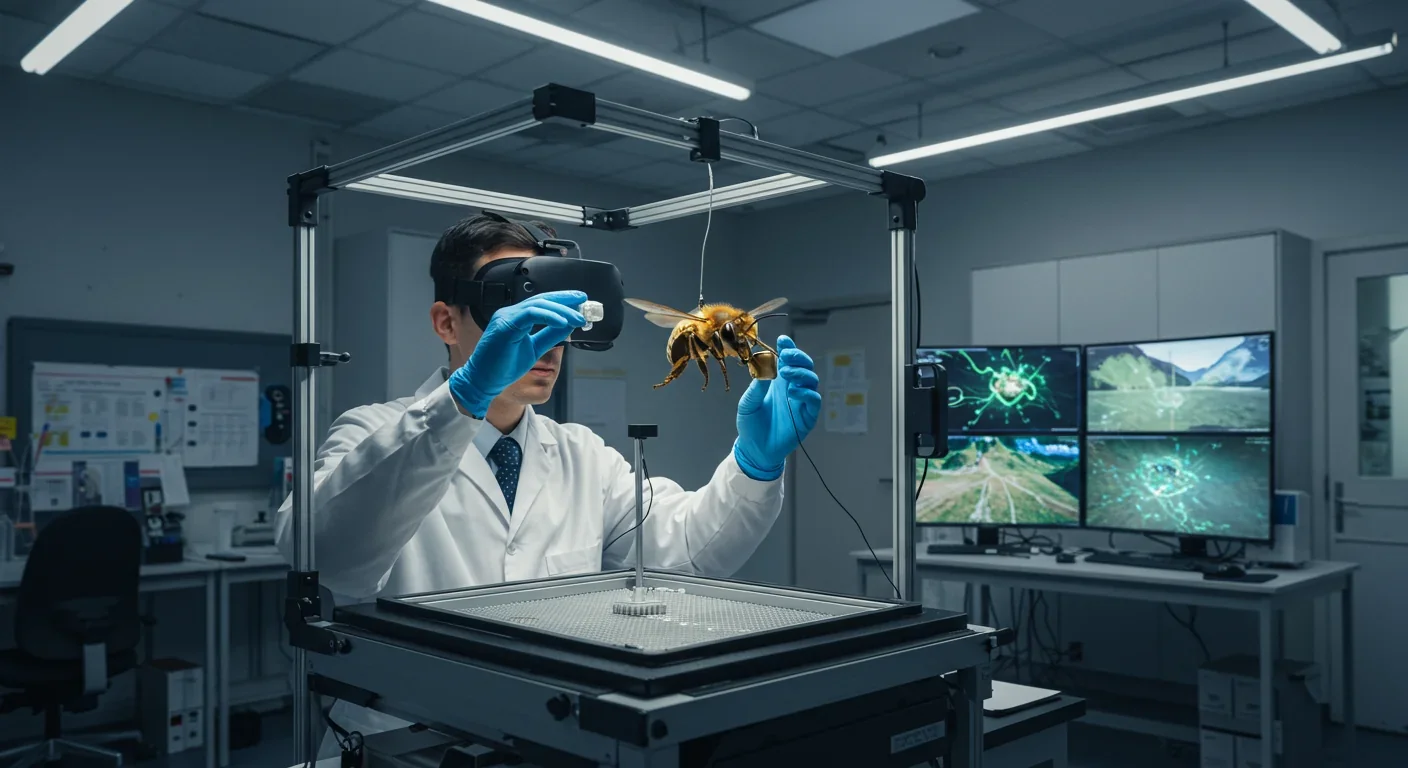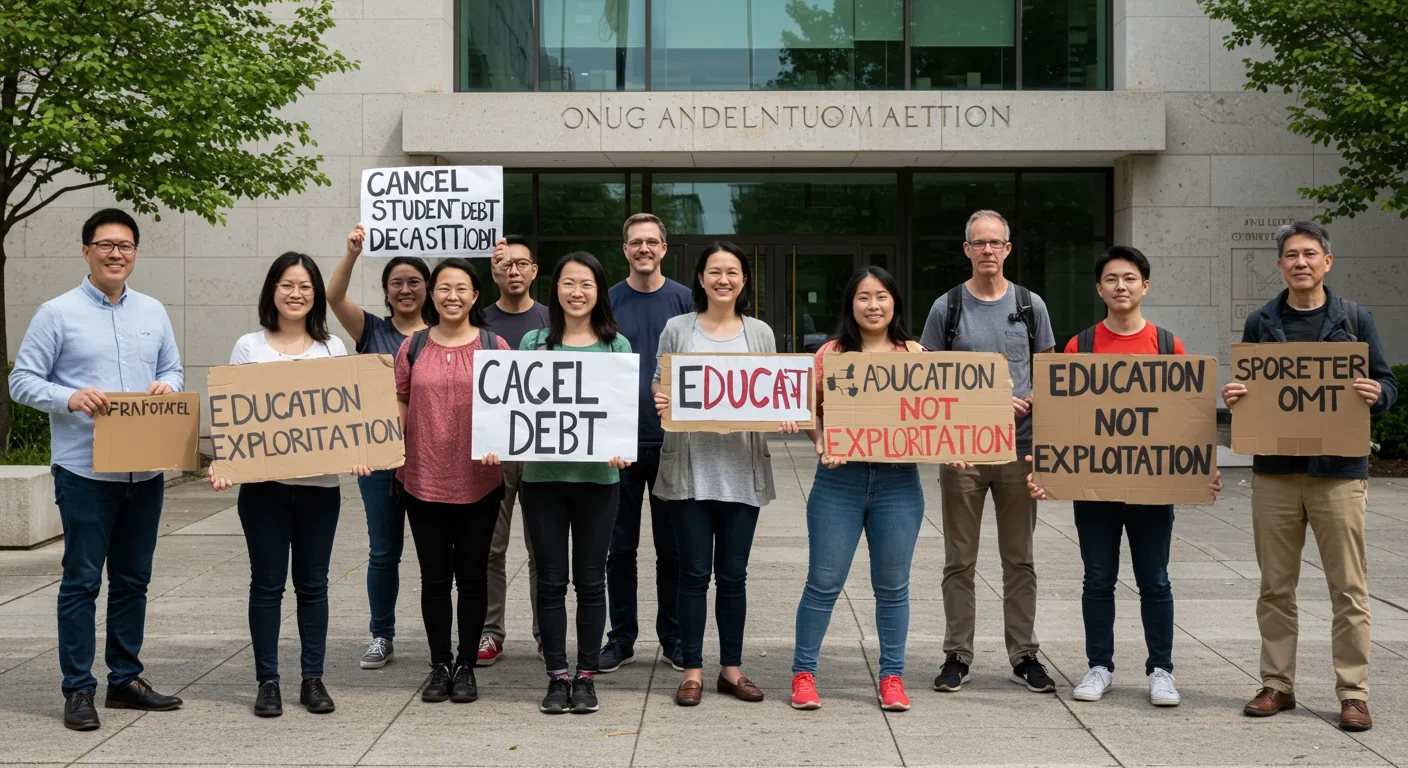Mycelium Packaging Replacing Styrofoam: Fungal Revolution

TL;DR: Marine organisms have mastered biomineralization for millions of years, and scientists are now engineering this process to remove toxic metals from water with over 99% efficiency at a fraction of conventional treatment costs.

By 2030, scientists predict that biologically-inspired water treatment systems could become the primary method for removing toxic metals from industrial and municipal wastewater. It sounds like science fiction, but marine organisms have been refining this technology for over 500 million years. They've mastered a process called biomineralization, where living cells precipitate minerals from their surroundings, and now researchers are figuring out how to weaponize it against lead, cadmium, arsenic, and other contaminants poisoning our water supply. The implications stretch far beyond environmental cleanup because what started as a curiosity about seashells is about to reshape how we think about pollution, industrial design, and the boundaries between nature and engineering.
Here's the elegant part: organisms don't fight heavy metals, they trap them. Biomineralization is nature's way of building shells, bones, and even magnetic particles by controlling how minerals form. Certain bacteria, algae, and invertebrates manipulate chemical reactions inside and around their cells to create solid minerals from dissolved ions in water. When iron-oxidizing bacteria encounter arsenic-contaminated water, they convert ferrous iron to ferric iron, which then reacts with arsenate to form scorodite, a stable mineral that locks arsenic away. Research from PMC shows that these bacteria can achieve over 99% arsenite oxidation efficiency in just 48 hours under controlled conditions, with a maximum specific oxidation rate of 280 mg As(III) per gram of biomass.
The process isn't limited to arsenic. Floating treatment wetlands using aquatic plants and their associated microbes have demonstrated the ability to reduce lead concentrations from 45 µg/L to 5 µg/L within 28 days in field pilots, according to studies published in Applied Sciences. These systems work because plant roots and microbial biofilms create ideal conditions for metal precipitation and biosorption. The plants uptake some metals directly, but the real magic happens in the root zone, where microorganisms facilitate the transformation of dissolved metals into solid particles that settle out of the water column.
What makes biomineralization particularly powerful is its selectivity. Unlike conventional chemical precipitation that requires carefully controlled pH and can generate massive amounts of sludge, biological systems can operate across a range of conditions and target specific contaminants. Some bacteria preferentially bind cadmium over zinc, while others specialize in mercury or chromium. It's because living organisms evolved sophisticated molecular machinery—proteins, enzymes, and cellular structures—that recognize and manipulate specific metal ions with extraordinary precision.
Biomineralization predates humanity by an unimaginable margin. The first organisms to precipitate minerals appeared during the Precambrian era, more than 600 million years ago. Stromatolites, layered rock formations built by cyanobacteria, are among Earth's oldest visible evidence of life. These ancient microbes used biomineralization to construct reef-like structures that still exist in places like Shark Bay, Australia. They demonstrate that the partnership between biology and chemistry has been shaping our planet's geology since nearly the beginning of complex life.
Fast forward to the Cambrian explosion, and biomineralization became an evolutionary arms race. Mollusks developed calcium carbonate shells, arthropods built chitinous exoskeletons reinforced with minerals, and corals began constructing the massive reef systems that today support roughly 25% of all marine species. Marine biogenic calcification became one of the most important biogeochemical processes on the planet, sequestering carbon and creating habitats at scales that rival human infrastructure.
The Industrial Revolution introduced a different challenge: anthropogenic contamination. Lead from gasoline and paint, cadmium from batteries and electroplating, arsenic from mining and pesticides—suddenly, ecosystems faced metal concentrations orders of magnitude higher than natural background levels. Conventional water treatment evolved to address these threats through methods like coagulation, ion exchange, and reverse osmosis. These technologies work but they're energy-intensive, expensive, and often generate hazardous waste that requires its own disposal infrastructure.
In the late 20th century, researchers began asking a provocative question: could we hijack the same biological processes that built coral reefs and seashells to clean up our mess? Early experiments with bacterial biosorption showed promise but the technology was slow and unreliable. The breakthrough came when scientists stopped trying to use organisms as passive sponges and started engineering systems that optimize the active biomineralization pathways. Instead of just absorbing metals, engineered bioreactors create conditions where bacteria and algae precipitate stable mineral compounds that can be easily removed and potentially recycled.
Historically, societies that failed to manage water quality collapsed. The Romans unknowingly poisoned themselves with lead pipes, ancient Mesopotamian civilizations salinized their agricultural lands through poor irrigation, and industrial cities in the 19th century suffered devastating cholera outbreaks from contaminated water supplies. Each crisis eventually drove innovation in water treatment, from sand filtration to chlorination to modern membrane technologies. Biomineralization-based remediation represents the next chapter in this story, offering a technology that's both ancient in its biological roots and radically new in its engineered applications.
Understanding how biomineralization works at the molecular level reveals why it's so promising for water treatment. The process operates through several distinct mechanisms, each suited to different contaminants and environmental conditions. The most common pathway is biologically controlled mineralization, where organisms actively direct mineral formation through specialized proteins and cellular compartments. Marine organisms like mollusks and diatoms use this approach to build shells with precisely controlled crystal structures and mechanical properties that exceed many synthetic materials.
Another mechanism is biologically influenced mineralization, where organisms don't directly control crystal formation but create chemical environments that favor precipitation. This is what happens when sulfate-reducing bacteria generate hydrogen sulfide in anaerobic sediments, which then reacts with dissolved heavy metals to form insoluble metal sulfides. The bacteria aren't trying to remove metals; they're just metabolizing sulfate for energy, and metal precipitation is a beneficial side effect that we can engineer into treatment systems.
Then there's biosorption and surface precipitation, where metal ions bind to cell walls, extracellular polymers, or biofilms. This process doesn't always produce crystalline minerals but it concentrates metals from dilute solutions onto biological surfaces that can be harvested. Research on bacterial sorption shows that certain strains can remove lead, cadmium, cobalt, and zinc with efficiencies exceeding 90% under optimal conditions. The key variables are pH, temperature, contact time, and the presence of competing ions.
Recent advances in genetic engineering and synthetic biology are taking this further. Scientists can now modify bacteria to overexpress metal-binding proteins, engineer novel mineral precipitation pathways, or even create biosensors that respond to specific contaminants by upregulating remediation genes. Studies on magnetotactic bacteria, which naturally produce magnetic iron oxide nanoparticles for navigation, have inspired research into engineering bacteria that produce magnetic particles specifically designed to capture and remove heavy metals from wastewater streams.

The engineering challenge is translating laboratory performance into industrial-scale systems. Pilot projects using floating treatment wetlands have shown that real-world conditions like temperature fluctuation, variable contaminant loads, and biological competition can significantly impact efficiency. Field trials in Southern California achieved 60% cadmium removal and 70% phosphorus removal in municipal stormwater ponds, which is impressive but not yet sufficient for high-stakes applications like drinking water treatment. Researchers are now developing hybrid systems that couple biological processes with physical or chemical steps to boost overall performance and reliability.
If biomineralization-based water treatment scales successfully, the ripple effects will extend far beyond environmental engineering. Consider the economic geography of contaminated sites. Right now, brownfield redevelopment is often prohibitively expensive because soil and groundwater remediation using conventional methods can cost millions of dollars per acre. Biological systems offer a potentially cheaper alternative, with cost estimates around $0.12 per cubic meter for floating wetlands compared to $0.45 for ion exchange systems. That price difference could unlock thousands of contaminated industrial sites for redevelopment, reshaping urban landscapes and property values.
There's also a geopolitical dimension. Countries with limited access to energy or advanced industrial infrastructure struggle to implement conventional water treatment technologies. Biomineralization systems can operate with minimal energy input—sunlight for photosynthetic organisms, organic waste for bacterial metabolism—making them accessible to communities that can't afford energy-intensive processes. If developing nations can leapfrog conventional treatment and deploy bio-based systems, it could democratize access to clean water in ways that current technology cannot.
Labor markets will shift too. Maintaining bioreactors and engineered wetlands requires different skills than operating reverse osmosis plants or chemical dosing systems. Environmental microbiologists, ecological engineers, and biotechnicians may become as essential to water utilities as chemical engineers and mechanical operators are today. Educational institutions will need to adapt curricula, professional certifications will evolve, and entire sectors of the environmental services industry will reorganize around biological rather than purely chemical or physical processes.
Public perception matters enormously here. Many people remain skeptical of technologies that involve "bugs in their water," even though our current treatment systems already rely heavily on beneficial bacteria for processes like nitrogen removal. The challenge is communicating that biomineralization isn't about adding pathogens to drinking water but rather harnessing well-understood biological processes in controlled environments to remove contaminants before water reaches the tap. If communicators fail at this, regulatory approval and public acceptance could lag far behind technical capability.
There's also the question of what happens to the metals after removal. Unlike conventional treatment that produces toxic sludge requiring expensive disposal, biomineralization can produce mineral concentrates that are potentially recyclable. Scorodite containing arsenic could be stabilized and safely stored, or even reprocessed to recover pure arsenic for industrial use. Metal sulfides precipitated by bacteria might be refined to recover copper, zinc, or other valuable elements. This creates the possibility of turning wastewater treatment from a cost center into a resource recovery operation, fundamentally changing the economics of water infrastructure.
Urban planning could evolve around distributed biological treatment systems rather than centralized chemical plants. Imagine neighborhoods with constructed wetlands that manage stormwater, remove contaminants, and create green space simultaneously. Instead of pipes carrying all runoff to a distant treatment facility, communities could integrate water quality management into their parks and open spaces, building resilience while reducing infrastructure costs. Case studies have already demonstrated that floating wetlands not only remove contaminants but also enhance biodiversity and create habitat, delivering multiple ecosystem services from a single investment.
The most immediate benefit is cost. When you don't need to pump water uphill, maintain high-pressure membranes, or constantly purchase chemical reagents, operational expenses drop dramatically. For municipalities operating on tight budgets, this could mean the difference between affordable water service and rate hikes that strain low-income households. For industries discharging wastewater, lower treatment costs translate directly to competitive advantage.
Energy savings matter too. Conventional treatment can consume 30-40% of a municipality's total electricity budget. Biological systems operate largely on solar energy or the chemical potential already present in waste streams. At a time when utilities face pressure to decarbonize, reducing the energy intensity of water treatment is low-hanging fruit. A shift to biomineralization could cut water sector carbon emissions by double-digit percentages.
Then there's the waste issue. Chemical treatment produces sludge loaded with concentrated contaminants that must be landfilled or incinerated, creating secondary environmental problems and disposal costs. Biomineralization produces mineral precipitates that are often more stable and sometimes valuable. Even when the minerals can't be recycled, they're typically less hazardous and easier to manage than chemical sludge. Some integrated systems using biochar and microbial processes have achieved arsenic removal efficiencies above 95% while producing materials that could be used as soil amendments or construction materials.
Resilience is another underappreciated advantage. Conventional treatment plants are single points of failure—if the facility goes down, the entire service area loses treatment capacity. Distributed biological systems are inherently redundant. Multiple wetlands or bioreactor arrays can provide backup for each other, and biological communities can often adapt to changing conditions or recover from disturbances faster than mechanical systems can be repaired. This matters enormously for climate adaptation, as extreme weather events increasingly threaten centralized infrastructure.
Innovation opportunities abound. Synthetic biology could enable designer organisms tailored to specific contaminants or conditions. Sensor technology could create smart bioremediation systems that adjust treatment intensity based on real-time water quality data. The integration of artificial intelligence with biological monitoring could optimize system performance in ways that aren't possible with conventional treatment. Early-stage research on algal biomass biorefineries suggests that systems combining metal removal with biofuel or biomaterial production could achieve net-positive economics by generating revenue from multiple product streams.
Success isn't guaranteed, though. The biggest technical hurdle is consistency. Biological systems are living, which means they're subject to seasonal variations, ecological dynamics, and occasional failures. A bacterial culture that performs brilliantly in summer may struggle in winter when metabolic rates slow. Algae that thrive in one climate may die off in another. Ensuring year-round, predictable performance requires sophisticated monitoring and management that most existing water utilities aren't equipped to handle.
Scalability remains unproven at the highest levels. Pilot projects treating thousands of cubic meters are one thing; municipal systems processing millions are another. Can we really build bioreactors large enough to handle the flow from major industrial facilities or urban wastewater plants? Will land constraints limit deployment in dense urban areas where space for wetlands or treatment ponds is scarce? These aren't just engineering questions; they're also questions about land use, zoning, and political feasibility.
Regulatory frameworks haven't caught up. Most water quality regulations were written with chemical and physical treatment in mind. Biological processes don't fit neatly into existing permitting structures, effluent standards, or monitoring protocols. Regulators need to develop new guidelines that account for the unique characteristics of bio-based systems without compromising public health protection. That process takes time, and conservative regulatory agencies may default to requiring biological systems to meet the same standards as conventional treatment even when it's not technically necessary.
There are also ecological risks. Introducing large quantities of engineered or selected organisms into the environment, even in controlled bioreactors, carries the possibility of unintended consequences. Could metal-accumulating bacteria escape into natural waterways and disrupt existing ecosystems? Could engineered organisms outcompete native species? These concerns are probably overstated—we already release treated wastewater containing countless microorganisms every day—but they'll need to be addressed through environmental impact assessments and containment protocols.
Economic barriers exist beyond just technology costs. Financing new infrastructure is difficult, especially for unproven approaches. Private investors want to see established track records before committing capital, but you can't build a track record without projects to demonstrate. Public funding could fill this gap, but governments face competing priorities and political pressure to minimize risk. The result is often a chicken-and-egg problem where promising technologies languish because nobody wants to be first.

Labor and training represent another challenge. If we retool water treatment around biological processes, the existing workforce will need retraining and new professionals will need education in interdisciplinary fields that combine microbiology, ecology, and engineering. Universities are only beginning to develop these programs, and it takes years to build a skilled workforce. The transition period could create labor shortages that slow deployment.
Finally, there's the question of limits. Biomineralization works extremely well for some contaminants and less well for others. It's great for heavy metals like lead, cadmium, and arsenic, but it may not be the best solution for organic pollutants, pharmaceuticals, or microplastics. A realistic assessment requires acknowledging that biological treatment will likely complement rather than replace conventional methods, at least in the near term. Hybrid approaches that combine the strengths of different technologies will probably dominate, which adds complexity to system design and operation.
China is already betting big on bio-based water treatment. Facing severe heavy metal contamination from decades of rapid industrialization, Chinese researchers have published more papers on biomineralization and phytoremediation than any other country. Government policies increasingly favor "ecological engineering" approaches that integrate water treatment with landscape restoration and agricultural productivity. Pilot projects using constructed wetlands and algal systems are proliferating across the country, often with explicit goals of creating models that can be exported to other developing nations through Belt and Road Initiative partnerships.
Europe has taken a different path, emphasizing regulatory frameworks and sustainability metrics. The European Union's Water Framework Directive encourages nature-based solutions, and countries like the Netherlands have pioneered floating wetlands and riparian buffer systems that remove nutrients and metals from agricultural runoff. European research consortia are focusing on optimizing these systems for cold climates and integrating them into circular economy models where waste streams become resource inputs. The emphasis is less on rapid deployment and more on creating scientifically robust, thoroughly validated approaches that meet stringent environmental standards.
In contrast, much of the developing world is interested in biomineralization primarily for decentralized, low-cost treatment in communities that lack centralized infrastructure. Projects in India and Bangladesh have tested bacterial systems for arsenic removal from tube wells, addressing the massive public health crisis caused by naturally occurring arsenic in groundwater. These efforts prioritize simplicity, affordability, and local maintenance capacity over achieving the highest possible removal efficiencies. The goal is "good enough" treatment that's accessible to poor rural populations, not perfect treatment that only wealthy urban areas can afford.
The United States presents a patchwork. Some states and municipalities have embraced constructed wetlands and bioremediation for specific applications, while others remain deeply committed to conventional treatment technologies. Much of the innovation is happening at the edges—small utilities in rural areas, industrial facilities looking to cut costs, environmental remediation projects at former mining or military sites. Federal funding through programs like EPA grants and Department of Defense environmental cleanup budgets has supported research, but large-scale deployment has been limited by regulatory conservatism and the political influence of conventional treatment equipment manufacturers.
Tensions exist between these different approaches. Export-oriented systems designed in wealthy countries don't always transfer well to resource-constrained settings. Technologies optimized for tropical climates fail in temperate or arctic conditions. Intellectual property disputes complicate technology transfer, with universities and companies in the global North holding patents on processes and organisms while communities in the global South bear the greatest contamination burdens. International cooperation will be essential to ensure that biomineralization technologies reach the places where they're most needed, not just where they're most profitable.
There's also a cultural dimension. Some societies have deep traditions of working with nature and view biological treatment as aligned with cultural values, while others have stronger preferences for technological control and may resist systems that seem "messy" or unpredictable. Indigenous communities in many regions have practiced traditional ecological knowledge around water management for centuries and may offer insights that modern science is only beginning to appreciate. The question is whether the development of biomineralization technologies can proceed in ways that respect diverse knowledge systems and governance structures rather than imposing one-size-fits-all solutions.
For professionals in water, environmental engineering, or public policy, the message is clear: start learning about microbial ecology and biological processes now. The skills that dominate today—chemical dosing calculations, hydraulic modeling, membrane maintenance—won't disappear, but they'll be supplemented by competencies in microbial community management, ecological system design, and bioprocess optimization. Continuing education, cross-disciplinary collaboration, and willingness to integrate biological thinking into engineering practice will separate leaders from laggards.
Students and early-career professionals should consider specialized training in environmental microbiology, ecological engineering, or synthetic biology. These fields were niche a decade ago; they're becoming central to the future of environmental infrastructure. Universities offering joint degrees or interdisciplinary programs that combine traditional engineering with biological sciences are good bets. Hands-on experience with pilot projects, field studies, or research internships will be invaluable because textbook knowledge alone won't prepare you for the messiness of real biological systems.
Communities and policymakers need to start experimenting now. Small pilot projects can test concepts, build local knowledge, and demonstrate feasibility without betting the entire water system on unproven technology. Constructed wetlands for stormwater management, floating treatment systems in retention ponds, or bioreactors handling specific industrial waste streams are all opportunities to learn and adapt before scaling up. The key is treating these as learning platforms, not just infrastructure projects—monitoring performance, documenting lessons, and sharing results openly.
Investment strategies should shift toward companies and technologies positioned at the intersection of biology and engineering. Firms developing novel biosorbents, engineering organisms for metal remediation, manufacturing modular bioreactor systems, or providing monitoring and control systems for biological treatment are all part of an emerging industry. Early investors who understand the technology and market dynamics could benefit as adoption accelerates, but this space is risky and requires patient capital willing to support long development timelines.
Advocacy matters too. Regulatory reform won't happen without pressure from environmental groups, industry associations, and informed citizens demanding that agencies update outdated rules. Public education campaigns can shift perceptions about biological treatment from "weird science" to "smart, sustainable infrastructure." Building coalitions across disciplines—environmentalists, engineers, economists, social scientists—can create the political momentum needed to overcome institutional inertia and vested interests defending the status quo.
On a personal level, understanding these technologies isn't just professional or civic; it's about imagining different futures. What would your city look like with wetlands instead of concrete treatment plants? How would it feel to know that the water you drink was cleaned by organisms rather than chemicals? What does it mean for our relationship with nature when we shift from dominating ecosystems to collaborating with them? These questions don't have single answers, but engaging with them expands our sense of what's possible.
The next decade will determine whether biomineralization moves from promising research to mainstream infrastructure. The technology is ready enough; the real barriers are institutional, economic, and cultural. Overcoming them requires coordination across scales—from research labs to regulatory agencies, from local pilot projects to international funding mechanisms. It requires patience, because biological systems work on nature's timeline, not quarterly earnings cycles. And it requires humility, because working with living systems means accepting uncertainty and adapting when things don't go as planned.
What's certain is that the challenge of water contamination isn't going away. Industrial activity continues to release heavy metals, legacy pollution persists in soils and aquifers, and climate change is redistributing contaminants in unpredictable ways. We need better tools, and biomineralization offers one of the most promising paths forward. The organisms have been ready for millions of years. Now it's our turn to catch up.

Wormholes collapse instantly because they require exotic matter with negative energy that doesn't exist in useful quantities, and quantum instabilities destroy them faster than light can cross their throats, making spacetime shortcuts a physics impossibility.

Scientific studies reveal electromagnetic hypersensitivity sufferers experience genuine symptoms but cannot detect EMF exposure better than chance, pointing to the nocebo effect rather than electromagnetic fields as the primary cause.

Mycelium packaging grows from agricultural waste in days, decomposes in weeks, and is already shipping in Dell computers and IKEA furniture—proving fungi can replace foam.

Our attraction to impractical partners stems from evolutionary signals, attachment patterns formed in childhood, and modern status pressures. Understanding these forces helps us make conscious choices aligned with long-term happiness rather than hardwired instincts.

Virtual reality experiments are revealing how honeybees form sophisticated cognitive maps with brains smaller than sesame seeds, revolutionizing our understanding of intelligence and inspiring energy-efficient robots while guiding pollinator conservation.

Millions of student loan borrowers are refusing to repay as an organized protest against a $1.77 trillion debt system they view as exploitative. With one in three borrowers at risk of default by 2025, this movement challenges whether the entire higher education financing model can survive.

Blockchain-based social networks like Bluesky, Mastodon, and Lens Protocol are growing rapidly, offering user data ownership and censorship resistance. While they won't immediately replace Facebook or Twitter, their 51% annual growth rate and new economic models could force Big Tech to fundamentally change how social media works.